Tucked away in a corner at the far end of the New Delhi Railway Station, where trains trundle up to get washed and readied for their journey, stands a lone, discoloured, freight container. Long abandoned by shippers, its door is tightly shut, but a low, whirring sound can be heard from within.
Inside lies a great Indian jugaad.

An old blower taken out of a knocked-down air-conditioned coach blows air at a handful of mothballs, like the ones used at home for winter clothes. At the other end of the dark container, now called the ‘Linen Sanitisation Room’, a similar blower hung from the ceiling ejects hot air. The idea is to maintain room temperature, or 40 degrees Celsius, inside the container — monitored manually with the help of a regular-looking, worn-out thermometer. In between, hang 80 blankets, in rows.
On February 27, Minister of State for Railways Manoj Sinha told the Rajya Sabha that while the Railways washes the other linen it provides passengers daily, the blankets are cleaned only once in two months. Facilities such as this one at the New Delhi station are supposed to fill the startling gap in the middle. Once every fortnight, the blankets end up here for some napthalene airing.
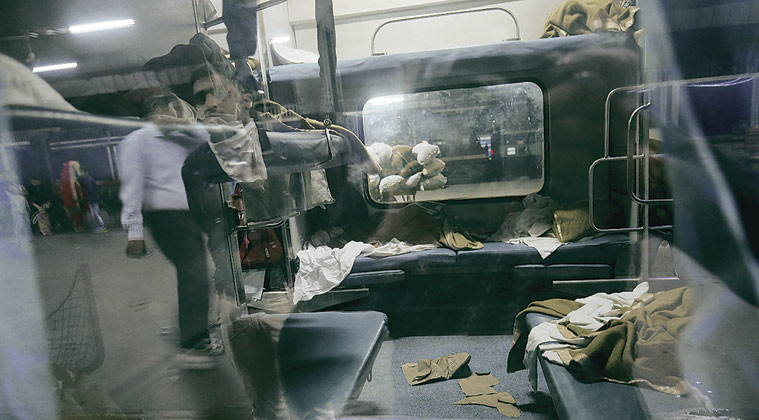
Of all the 68 divisions in the Railways, Delhi is the biggest in terms of linen management. “Theoretically, if you add up the distance each linen set travels across the Indian Railways every day,” says Delhi Divisional Manager Arun Arora, the head of all train operations in the National Capital Region, “you could probably reach the moon.”
This is the story of that journey.
A LAUNDRY, GREATER NOIDAProcesses 1.24 lakh linen items every day
It’s midday when a truck carrying bagloads of soiled linen from the New Delhi Railway Station, 40 km away, stops at a swanky white building in Sector 83, Noida.
Wearing plastic caps, workers rush out to unload the bags with practised drill. Each bag carries 50 sets of linen, minus the blankets, which have been separated and sent to another facility.
In 1998, Northern Railway hired private laundry service Launderaids as the official “washerman” for all of the Delhi Division’s linen-washing needs. Launderaids owns this building, as well as runs the facility near the railway station where the blankets are washed.
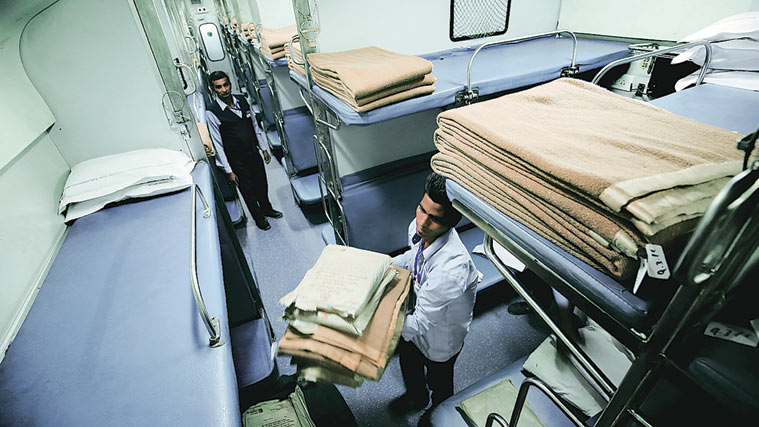
“It’s mechanised washing, with chemicals etc,” says Nirupam Malhotra, 46, the Goa-based proprietor of Launderaids. Along with the hefty Railway account — that takes up two floors of this three-storey building — Malhotra has a few international airlines and five-star hotels as clients.
Imported German ‘tunnel washers’ handle up to 42 tonnes of washing, 30 earmarked for the Railways alone. Around 300 employees work round the clock in three shifts.
On the ground floor, the soiled linen is first segregated into heaps of bedsheets, towels and pillow covers, and then placed separately, on conveyor belts heading into a huge washing tunnel. Inside the tunnel, the clothes are washed in a mix of chemicals and detergent — the proportion of the mix controlled by a computer programme.
The clothes spend about 30 minutes inside the tunnel, before heading to two dryers, each the size of golf-carts. Here, the linen is hot compressed to squeeze out water.
From the dryers, the washed linen is carried to large tables. Workers segregate the linen and fold it by hand while the bedsheets are sent into flat iron machines.
It is in the sorting process that workers look out for stains which may not have gone away with the wash. Today a couple of bedsheets have been found to still contain deep stains, and are sent for a rewash.
“Passengers have this weird habit of cleaning their shoes with the bedsheets or hand towels just before getting off the train. Those stains are really hard to remove,” says Malhotra.
There is another criterion for cleanliness. The Railways accepts minimum 80 per cent whiteness, which is the international norm. Before an item is sent for packing, workers determine its whiteness percentage with the help of an electronic handheld device.
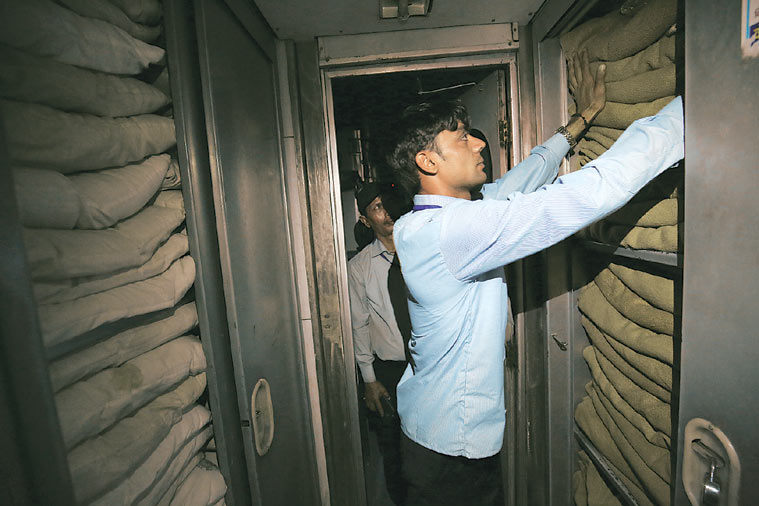
Meeting the 80 per cent norm though is not easy. Sometimes the linen is too old, at other times too soiled. The machine has detected a couple of sheets to be slightly less white than the standard today.
But that’s okay, a staff member smiles. “The rule is that the average of any sample of say 10 items picked up for the whiteness test should be at least 80, which is always maintained.”
Once the items are determined to be clean, they are sent to the first floor, where the linen sets are manually packed in brown paper bags of the Railways. The bags are then put into larger bags — different from the ones they came in — loaded onto trucks, and sent to the ‘linen depot’ at the New Delhi Railway Station.
In the Capital, there are five such depots attached to the big stations.
Launderaids processes 1.25 lakh linen items every day, counting the blankets. Washing, packing and the logistics cost the Railways Rs 6 per bedsheet and Rs 3 per towel and pillow cover each.
A FACTORY, NEAR NEW DELHI RAILWAY STATIONProcesses 1,000 blankets every day
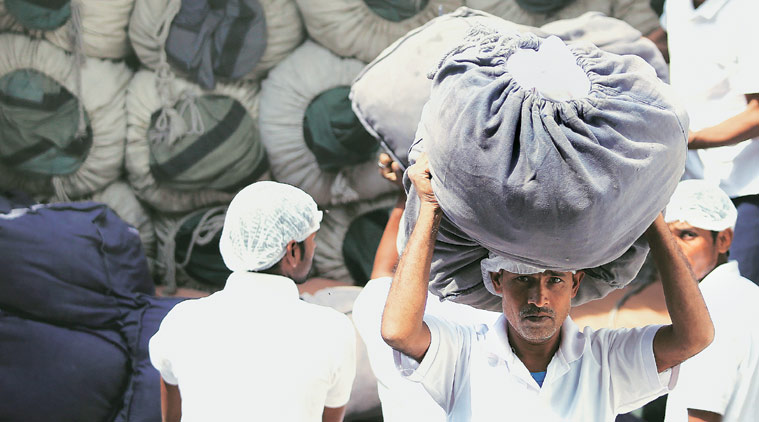
It’s 5 in the evening. Vinod Kumar, 24, a tailor from Bihar, is almost at the end of his 10-hour shift in a 3,000-sq ft factory shed off Chelmsford Road, a stone’s throw from the Paharganj side of the New Delhi Railway Station.
He is surrounded by heaps and heaps of brown, used blankets. For Rs 11,000 a month, he repairs used blankets. He replaces the torn-out satin borders as the Railways doesn’t accept blankets with damaged ends. “I repair around 80-90 blankets on an average from a lot of 1,000 that comes for washing daily,” he says.
Earlier the shed would only get linen from the Railway hospital on adjacent Panchkuian Road to wash. The facility was given to Launderaids in 1998. Officials assure the hospital linen and train blankets are not washed in the same machine.
Three industrial-size machines, each able to wash 35 blankets at a time, run constantly in a monotonous hum. Each wash takes almost an hour, after which the 10-member staff folds the dried blankets and sends them to the linen depot.
Unlike the Noida facility, dankness never leaves the insides of this factory with its constantly wet floor. “The blanket laundry is a much older facility. It’s owned by the Railways, we run it,” Malhotra says.
Officials say a blanket goes through such cleaning once a month. And yet, the Railway Ministry was not wrong in its reply in the Rajya Sabha. Statistically if one takes the frequency of blanket washing across all railway divisions across the country, the figure comes to near about once in two months.
Incidentally, a policy directive issued by the ministry around 13 years ago also says, “Blankets should be dry-cleaned at least once in two months.”
A K Mital, Chairman, Railway Board, says, “We can always take a relook (at the directive). But please also find out how many times a blanket is washed in other commercial establishments, like five-star hotels. The fact is woollens are not washed after every use anywhere. And we give two bedsheets to each passenger (in a linen set) so that one of them can be used underneath the blanket.”
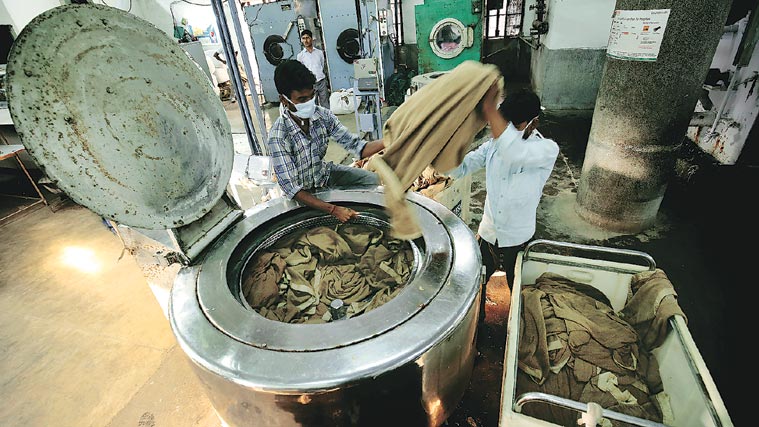
The Railways pays over Rs 18 for washing each blanket. Including other linen items, the cost of washing etc works out to Rs 36.80 per linen set. Around 3.5 lakh sets are washed every day.
LINEN DEPOT, NEW DELHI RAILWAY STATIONTotal Delhi inventory: 75,000 linen sets, including blankets
The Delhi Division spends Rs 32 crore on washing and distribution of linen every year. Of its inventory of around 75,000 sets, close to 30,000 go to service 45 trains every day. Besides, there are always special trains, run during summer, winter and festive holiday seasons.
Documents seen by The Sunday Express show that the frequency at which the Railways replaces its linen sets, or retires them, is far higher than the “codal life (or economic life span)” assigned to each item.
A blanket, for example, has an official codal life of 48 months, which means it can be in service for four years. But divisions often replace them after 12 months. A bedsheet can be officially used for 12 months, but nowadays is retired after eight.
The shortest codal life is assigned to towels — nine months — but these are replaced every four months.
A used linen set remains on the train until it returns to its originating station, which could be several days later. For simplifying inventory management, linen from a depot in Delhi goes to laundry only after it comes back to Delhi. So practically, a long-distance train carries new sets for more than just one journey.
Outside the linen depot at the New Delhi station stands the container where blankets receive their napthalene treatment. A depot superintendent says, “Different depots have different arrangements for the blankets. Here we make do with a container, in Old Delhi they have a room. But the mechanism is the same.”
The New Delhi station depot, he adds, alone uses 50 kg of naphthalene balls every month.
LINEN MANAGEMENTTotal daily inventory: around 18 lakh sets
The Railways has long struggled with the task of giving its upper-class passengers the comfort of a clean pillow, bedsheets and blanket on board.
In the old days, linen, habitually called “bedrolls”, was provided only to passengers of AC 1st class.
Then, in the mid-1990s, came AC-II tier class. The period also saw a number of AC-only Rajdhani Express trains being introduced, almost one every year. The demand for linen kept going up.
The Mechanical Department of the Railways, which manages coaches and diesel engines, was in charge of handling bedrolls in 1st AC. With the advent of AC-II tier, the job was shared with the Commercial Department, managed by the Indian Railway Traffic Service.
Old-timers say there was hardly a system for even procuring the linen then. “No one had a clue what to do. The demand just fell on our heads,” recalls an old railway employee of the Commercial Department who did not wish to be named. “So we formed a spot procurement committee of three inspectors and went to the wholesale market at Delhi’s Sadar Bazar and picked up blankets and bedsheets and other items.”
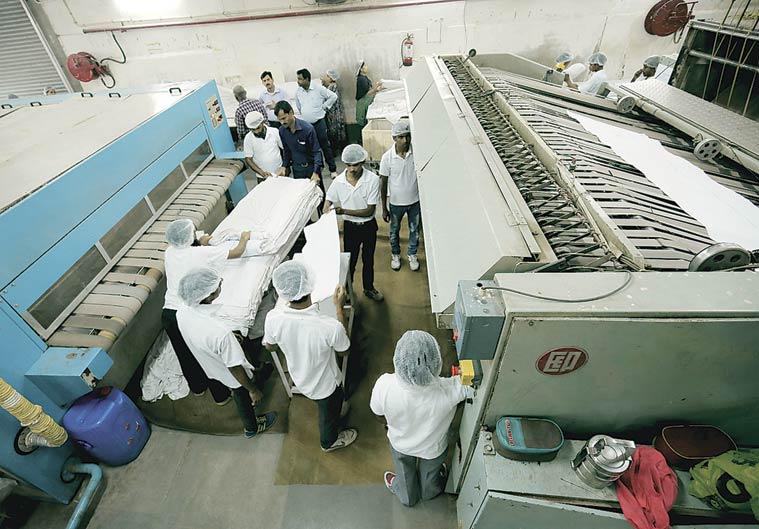
Soon, the job of distributing the linen in AC-II tier coaches was shouldered by the Electrical Department too, with the logic that the attendant who controls the AC machine in the coaches could also distribute the linen.
The real explosion in the demand, however, came with the arrival of AC-III coaches in the early 2000s. Now the scale of linen management went up to industrial proportions.
In 2002, in an attempt to get out of the constant hassle of procurement and washing, some officers of the Commercial Department in Delhi got some linen samples from Eurostar railway in Europe, hoping to replicate the same in India. These were light and could be of the use-and-throw kind, much like the “disposable linen” concept being talked about nowadays. But the experiment failed.
“We gave the samples to manufacturers but not a single one could replicate the quality. So we had to shelve the project,” the former employee says.
It was only in 2008-09 that the Railway Ministry finally decided that the job of linen maintenance be given to those in-charge of maintaining and cleaning coaches. Since then, linen management is handled only by the Mechanical Department.
Earlier, small local laundries handled the job of washing. However, many were caught simply rinsing the linen or just drying them, during inspections.
The Railways then decided to go in for public-private partnership. Under this Build-Operate-Own-Transfer model, the Railways gives land to a private company, which sets up a laundry as per specifications laid down by it. In return, the Railways gives a 75 per cent assured off-take guarantee for at least 10 years. After 10 years, all the assets get transferred to the Railways.
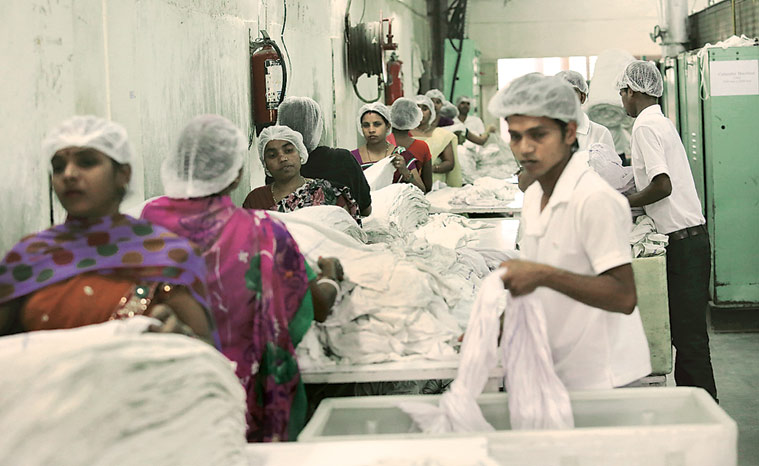
Chennai was the first to see a BOOT model laundry. Subsequently, such laundries came up in Kochuveli in Kerala, Hyderabad, Wadi Bunder in Mumbai, and in Ahmedabad.
Delhi is in line to get a BOOT laundry near the New Delhi station for an estimated project cost of Rs 67 crore. There are plans of getting three more in Delhi.
While each linen set has a blanket, two bedsheets, a pillow cover and a hand towel, AC 1st class sets have an additional bath towel and, a blanket cover.
Typically, the Railways pays around Rs 290 to procure a bedsheet, Rs 370 for a blanket, and Rs 34 for a towel. Last financial year, the Delhi Division alone required over 3.2 lakh new bedsheets, over half a crore new hand towels, around 28,000 new blankets and other items.
The idea is to procure six times more than what is required, for continuous rolling of fresh sets and to manage a buffer, officials say.
“Managing linen alone is a full-time job. These days with user feedback pouring in from Twitter, Facebook and multiple other channels, the focus has to be even more,” says Delhi Divisional Manager Arun Arora.
A smaller division like Salem, Tamil Nadu, may spend only around Rs 1.5 crore per annum to service eight trains. In such smaller divisions, it does not make economic sense to own linen items. The Southern Railway there has a contractor who owns the sets, washes and distributes them at Rs 32.50 per set.
However, Shubhranshu, Divisional Railway Manager, Salem, says they aren’t happy with the contractor’s service. “I have fined him several times. We will be building a BOOT-type laundry soon in Coimbatore.”
Another problem in linen management is pests. On board trains, linen sets are stocked in closets that are located next to toilets. Cockroaches and rodents often end up damaging the linen as well as giving the blankets a foul smell. Monsoon dampness aggravates the smell.
ALTERNATIVES, COMPLAINTSContractor fined Rs 5,000 last year
In Delhi, officials claim complaints regarding linen are few and far between. Arora remembers just one complaint from last year regarding Launderaids. “I fined the contractor Rs 5,000 and personally censured him. Such instances are not many.”
As per the contract conditions, if some fault is found in official inspections, the penalty starts from a fine of Rs 3,000. If a passenger complains, Rs 500 for each complaint is cut from the contractor’s bill.
Malhotra estimates that there are a couple of customer complaints every month, and in the 20 years that he has been working with the Railways, inspection-related complaints “from time to time”. “When officials come for inspection, I guess they are also under pressure to find faults no matter how well you do the job,” he reasons.

But unlike food-related complaints, linen ones are far fewer as the Railways generally replaces a set if asked by an irate passenger.
The Railways has been accused though of not trying out new ideas enough, including by industry representatives who keep approaching the ministry with newer products.
The talk of disposable linen sets itself has been around for years. But questions like where and how to dispose them, and whether such disposal will burden the railway systems, have been hurdles. At one point, “biodegradable disposable” linen was mooted — basically a product that does not exist at the moment.
In this year’s Rail Budget, Minister Suresh Prabhu announced that the Indian Railway Catering and Tourism Corporation, the website that handles e-ticket bookings and manages food-related propositions in the railway ecosystem, would also offer disposable linen a passenger could buy.
However, a ministry official remains sceptical. “If a passenger has to buy a linen set, is it not better he carries something from home?”
Besides, the Railway Ministry has approached the National Institute of Fashion Technology to get a new design for its linen sets. For blankets it has specified that the material should be thinner, washable and fire-retardant. A prototype is yet to arrive.
For their part, users are not entirely blameless, officials say.
Like Launderaids proprietor Nirupam Malhotra, railway officials across divisions list wiping of shoes with bedsheets and towels as the most common problem in keeping the linen clean. But that’s not all.
“People wipe food off their seats with towels. We have also found potty stains, probably from infants on board. Then there are the hard stains of hair-dye mixed with oil on pillow covers,” says Malhotra.
Carriage maintenance workers have even found towels stuffed inside bio-toilets. “How they do that we will never know,” says a Railway Board source.
JAMMU RAJDHANI, NEW DELHI RAILWAY STATION
At least 140 linen sets per attendant
The job of distributing linen sets in trains has also been outsourced to a third party, under depot-level supervision of railway officials. Each attendant is given linen sets estimated to be required for a coach making a round trip. He is accountable for their safe return to the linen depot after the train comes back.
It’s 5.30 pm, and the truck from Greater Noida carrying the clean linen to the depot at the New Delhi station has reached. The depot’s assembly room already has bags more full of soiled linen from other trains. The clean ones are stocked in a store.
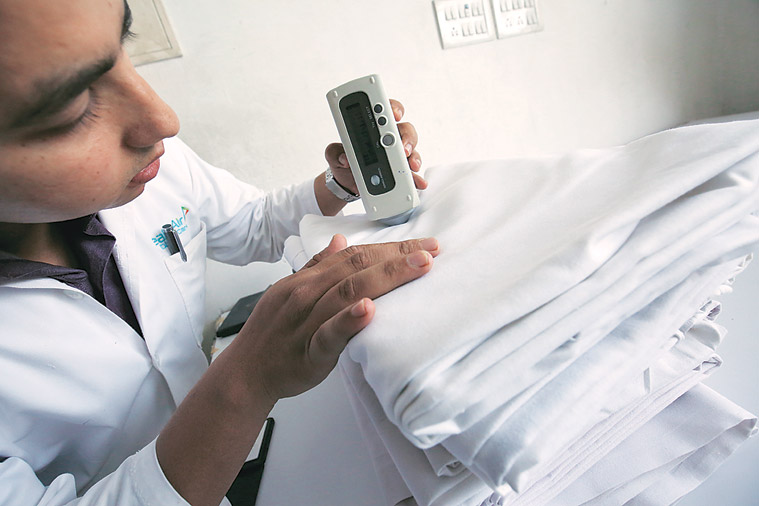
A battery of depot attendants and a few supervisors are waiting to receive the truck. The crowd and noise of Delhi’s G B Road, where its entrance is located, is muted here.
By 6 pm, the process begins to load the batch of clean linen and blankets onto the Jammu Rajdhani, due to depart two hours later.
A group of attendants, mostly in their 20s, wearing light-blue uniform and a name-tag that identifies them as Launderaids employees, lines up for “counseling”.
“Oonchi awaaz mein baat nahin karenge (you will not speak to passengers loudly),” depot supervisor Satwant Singh tells them. “You will not argue with the passengers. Take care of your linen and replace items the moment a passenger says he does not like any,” he goes on as the young men stand listlessly.
“Why didn’t you shave today?” an official asks one attendant.
Such counselling happens before every trip, the depot supervisor claims.
After about 10 minutes of such talk, they are assigned their linen sets, with records kept in a register. If any item goes missing, the amount is cut from the attendant’s salaries, or from the account of the contractor.
Towels go missing the most, say the officials. A back-of-the-envelope statistic for pilferage is between 1-2 per cent.
By 6.30 pm, the linen sets have been loaded onto trolleys, which are wheeled to the washing line where a rake of Jammu Rajdhani is being readied.
We look for a set that we had marked earlier that day at the Noida laundry. It now rests on the side-upper berth of B-1 AC-III tier coach — ready for yet another journey.
[Photographs: By Praveen Khanna]



.jpg)
.jpg)



0 comments:
Post a Comment